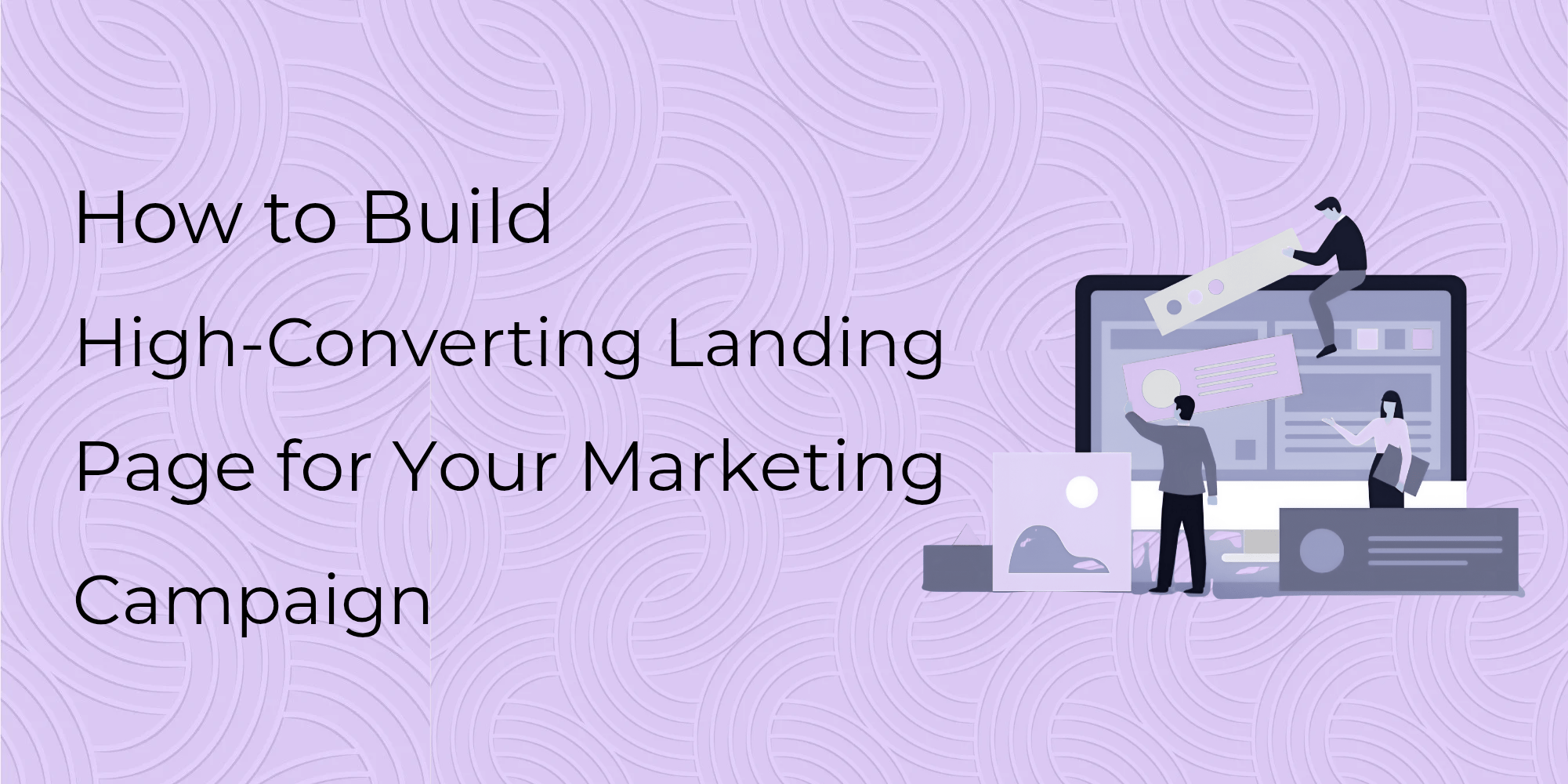In the competitive world of digital marketing, getting visitors to your website is only half the battle. The real challenge lies in converting that traffic into leads, customers, or subscribers. That’s where a high-converting landing page becomes essential. Whether you’re promoting a new product, collecting email signups, or launching a special offer, your landing page plays a crucial role in the success of your marketing campaign.
● Why Landing Pages Matter for Marketing Campaigns
Here’s why landing pages are crucial for successful marketing:
- Improved Conversion Rates: A targeted page with one CTA is more likely to convert than a general page with multiple options.
- Better Campaign Tracking: You can easily measure the performance of each landing page and see what works.
- Enhanced User Experience: Visitors appreciate a clear, easy-to-navigate path that helps them get what they want quickly.
- Higher ROI: Higher conversions at lower acquisition costs mean better returns on your marketing spend.
Step-by-Step Guide to Building a High-Converting Landing Page
- Define Your Goal
Before you start designing, be clear about the single objective of your landing page. Do you want users to:
- Download an ebook?
- Sign up for a free trial?
- Register for a webinar?
- Make a purchase?
The entire structure and content of your landing page should revolve around this primary goal.
- Understand Your Target Audience
Effective landing pages speak directly to the pain points, desires, and motivations of a specific audience segment. Research your ideal customer:
- What problems are they trying to solve?
- What outcomes are they hoping for?
- What objections might they have?
Your message and offer should align closely with their needs and expectations.
- Craft a Compelling Headline
Your headline is the first thing visitors will see, and it must grab their attention instantly. A great landing page headline should:
- Be clear and specific
- Address a pain point or promise a benefit
- Create curiosity or urgency
- Write Persuasive Copy
Your copy should guide the reader toward taking action. Here’s how:
- Start with a strong value proposition: Explain what makes your offer valuable.
- Use bullet points: Make key benefits easy to scan.
- Address objections: Answer common concerns (e.g., cost, time, effectiveness).
- Use emotional triggers: Highlight how your offer improves their life or solves their problems.
- Include social proof: Testimonials, reviews, user counts, or media mentions can boost credibility.
- Design with Conversion in Mind
Your landing page design should be clean, intuitive, and conversion-focused:
- Above the Fold: Place the most important elements (headline, CTA, key benefit) where they’re visible without scrolling.
- Whitespace: Don’t overcrowd. Use space to guide the eye.
- Consistent Branding: Use your brand colors, fonts, and style to build trust.
- Mobile Optimization: Over 50% of traffic comes from mobile. Ensure your page looks and functions perfectly on all devices.
- Fast Load Time: Pages that take more than 3 seconds to load lose a significant number of visitors.
- Create an Irresistible Offer
Your offer is the star of the show. Make it so valuable that visitors feel compelled to act.
Examples of effective offers:
- Free trials or demos
- Exclusive discounts
- High-value lead magnets (eBooks, checklists, templates)
- Limited-time promotions
Make sure the perceived value outweighs any hesitation or friction in taking the next step.
- Use a Strong Call-to-Action (CTA)
Your CTA button is where conversions happen. Make it:
- Visible: Use contrasting colors and clear placement.
- Action-oriented: Use verbs that inspire action (e.g., “Get My Free Guide,” “Start Your Free Trial”).
- Reassuring: Reduce anxiety by adding small trust signals like “No credit card required.”
Avoid generic phrases like “Submit” or “Click Here.”
- Add Trust Elements
People are naturally skeptical. Adding trust signals can ease their concerns:
- Customer testimonials with names and photos
- Trust badges (e.g., secure checkout, satisfaction guarantees)
- Case studies or user results
- Privacy policy links near forms to reassure about data security
These elements build credibility and reduce friction.
- Use Visuals Strategically
Images and videos can enhance your message — when used properly:
- Show the product or outcome: Help visitors visualize success.
- Use explainer videos: Short videos can improve conversion rates.
- Avoid stocky or irrelevant images: Use real people or product shots.
If you use video, include captions and make sure it doesn’t slow down your page
- A/B Test Everything
Even small changes can dramatically affect conversion rates. Test variables like:
- Headlines
- CTA buttons (color, text, placement)
- Images or videos
- Length of copy
- Form fields (fewer is usually better)
● Common Landing Page Mistakes to Avoid
- ❌ Too Many CTAs: Confuse users and lower conversions.
- ❌ Cluttered Design: Distracts from the goal.
- ❌ Long Forms: More fields = more friction.
- ❌ No Clear Value Proposition: If visitors can’t see what’s in it for them, they’ll bounce.
- ❌ Ignoring Mobile Users: Mobile-first design isn’t optional anymore.
● Examples of High-Converting Landing Pages
To inspire you, here are common traits found in successful landing pages:
- Shopify’s Free Trial Page – Clean layout, strong headline, and trust-building testimonials.
- Airbnb Host Signup Page – Personalized income estimate, minimal friction, and clear benefits.
- ClickFunnels – Uses video, urgency, and strong CTAs to drive signups.
● Tools to Build Landing Pages (No Coding Needed)
You don’t have to be a developer to create beautiful, high-converting landing pages. Here are some popular tools:
- Unbounce
- Instapage
- Leadpages
- ClickFunnels
- HubSpot
- Carrd (for simpler pages)
These tools offer drag-and-drop builders, templates, A/B testing features, and integrations with your marketing stack.
Final Thoughts
A high-converting landing page isn’t built by accident. It’s a carefully crafted asset that aligns your marketing message with user intent — and guides visitors seamlessly to take action. Whether you’re running paid ads, email campaigns, or social promotions, your landing page will make or break your results.
To summarize, remember the core principles:
- One goal, one message
- Clear value and compelling offer
- Persuasive, benefit-focused copy
- Visually clean and mobile-friendly design
- Powerful CTA backed by trust elements
- Continuous testing and optimization
Take the time to understand your audience, test your approach, and refine your messaging. A great landing page doesn’t just convert — it builds trust, drives engagement, and boosts your bottom line.


